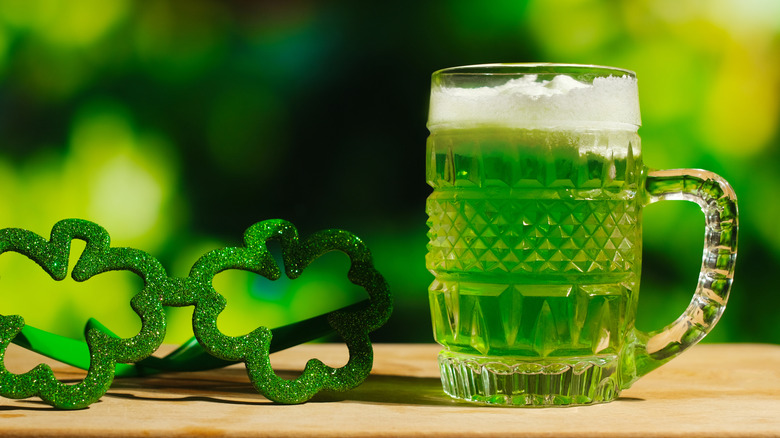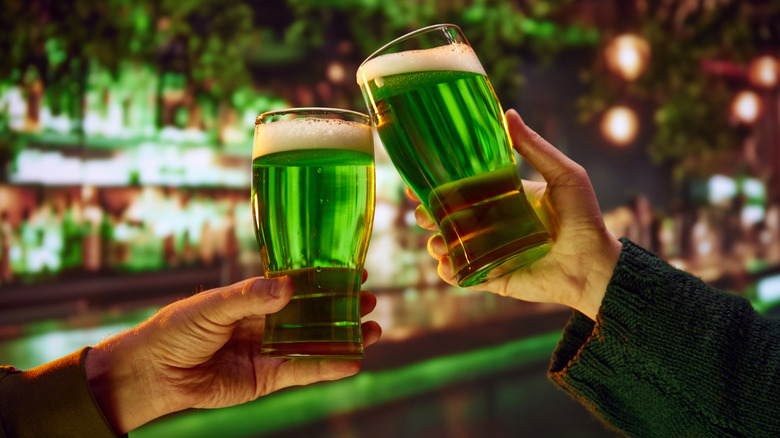The History Behind Why We Drink Green Beer On St. Patrick's Day
Why do we drink green beer with our corned beef on St. Patrick's Day? The obvious answer might be that green is the color of the day, so why not make the beer green too. But this begs another, less obvious question. Why is green the color of choice for St. Patrick's Day?
The short version is that it comes down to the evolution of green as a color symbolizing Irish nationalism. Ireland's flag has three stripes: orange, white, and green. The green tends to symbolize Ireland's Catholic population (the dominant religion of the country) while the orange was representative of the Protestants. Thus, historically speaking, green was the color associated with Irish Catholic rebels who sought to break Ireland free from (Protestant) England's rule.
There are other understandings of why green is so synonymous with St Patrick's Day. For example, it's seen as symbolizing the color of the shamrock as well as the vivid green Irish countryside. In fact, some say the shamrock also may have inspired the green on Ireland's flag. There's also the idea that green makes the wearer invisible to leprechauns who run around pinching people on St. Patrick's Day, although this is considered to have been an American Irish invention. Green beer is an extension of the other green apparel of St Patrick's Day, although it should be noted that it's not really an Irish thing. It's more American Irish, with the Irish people of Ireland proper opting for dark-colored Guinness instead.
How did green beer first get made?
Green beer was created in America, not Ireland (although it was an American Irish professor who devised it). Thomas H. Curtin was his name, and as of about 1914, he brewed it for members of his New York City clubhouse. At least one news article indicates that green beer had been served as early as 1910 in Spokane, Washington, although that bartender reportedly declined to share his secrets.
Curtin used a questionable method, adding a laundry whitener called "wash blue" to beer. In a small amount, it added a green shade while apparently — luckily — not poisoning the party guests. It didn't quite catch on immediately, with the color being seen as an oddity, but by around the 1950s, drinking green beer on St. Patrick's Day was a widespread tradition.
The green beer served nowadays is fortunately not the same as Curtin's original laundry whitener version. Modern green beer is usually made with liquid food coloring, but perhaps surprisingly, it's made with blue coloring. This is because it mixes with the yellow tint of beer to form a vivid green. This shouldn't impact the flavor of the beer. But this isn't the only way to do it: Some breweries have toyed around with trying to brew green-colored beer, typically by integrating a type of algae called spirulina into the brewing process. For a shortcut, you can just add powdered spirulina yourself at home. However you do it, use light-colored beers, so the color shows.

